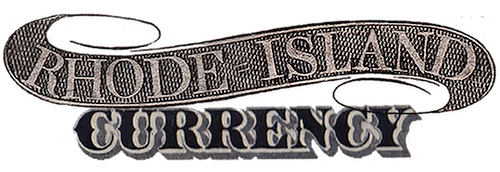$1,000 R.I. State House Construction Bond
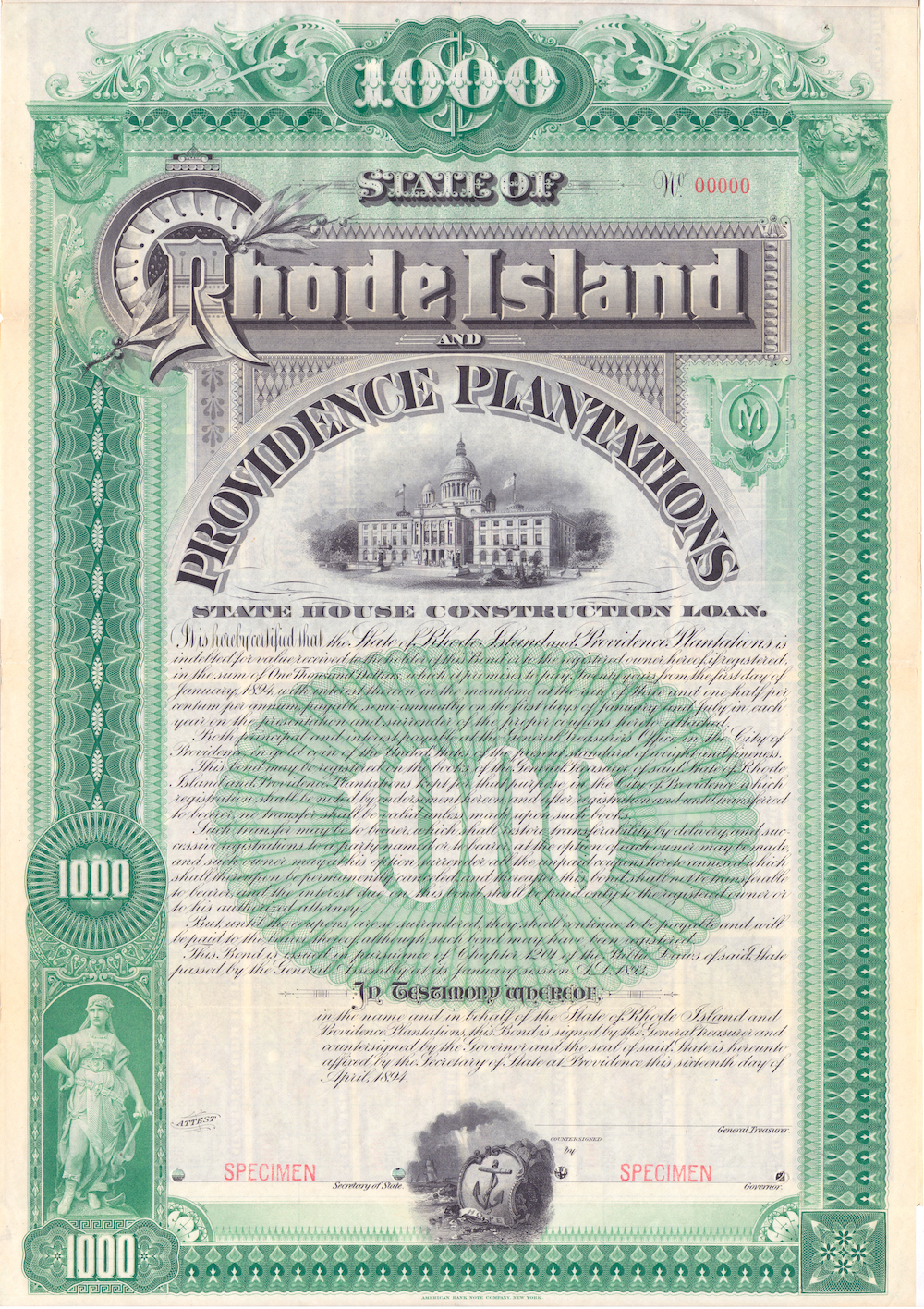
The American Bank Note Company designed this $1,000 Gold Bond to be used to raise funds for the construction of the new Rhode Island State House.
By today’s standards, Rhode Island’s early seat of government was rather humble.
Unlike Massachusetts with its gold-domed state house on Beacon Hill, RI’s General Assembly did not have a permanent home for more than a century, instead rotating among five different county courthouses. Their meeting place in Providence was a building on the northern end of Benefit Street that does not draw much attention these days, though it was visited by the likes of George Washington, Frederick Douglass and Susan B. Anthony. The legislature began gathering there in 1761 and would use the two-story brick building for the next 140 years.
In 1890, the General Assembly embarked on an ambitious plan to build a new home for Rhode Island’s government, a grand monument to democracy. It was clear they had outgrown their accommodations on Benefit Street. Maybe they were also motivated by the ostentatious new state houses that Illinois, Iowa, New York and Texas had recently erected. They were certainly inspired by the U.S. Capitol Dome, which had been completed only 24 years earlier.
McKim, Mead & White, one of the nation’s leading architectural firms, was hired for the project. The group was intimately familiar with area, having designed some of Rhode Island’s most famous landmarks, from Rosecliff Mansion and the Newport Casino to the Narragansett Towers.
The State Treasurer began raising funds in 1894 and ground was broken on Smith Hill the following year.
The specimen bond shown here, engraved by the American Bank Note Company, is an artifact of that time, reflecting the heavily embellished graphic design of the day, as well as the more utilitarian requirements of a late 19-century financial instrument.
The new State House was expected to cost $1,500,000. To pay for this, Rhode Island issued 3 ½% bonds. “The bonds are exempt from taxation in the State of Rhode Island,” one announcement noted, “and are secured by a sinking fund established for their payment. Interest will be payable in gold on the first day of January and July, and $300,000 of the bonds will fall due in 1904, $400,000 in 1914, $400,000 in 1924 and $400,000 in 1934.”
When the building was completed in 1904, the final cost was $3 million, or double its 1894 estimate.
• For more on the Rhode Island State House, see Quahog.org.
• To see Rhode Island’s Old State House, as depicted on an 1850s $10 note, click here.
• To see how the U.S. Capitol looked before it mid-19th century additions, as depicted on a Rhode Island bill, click here.
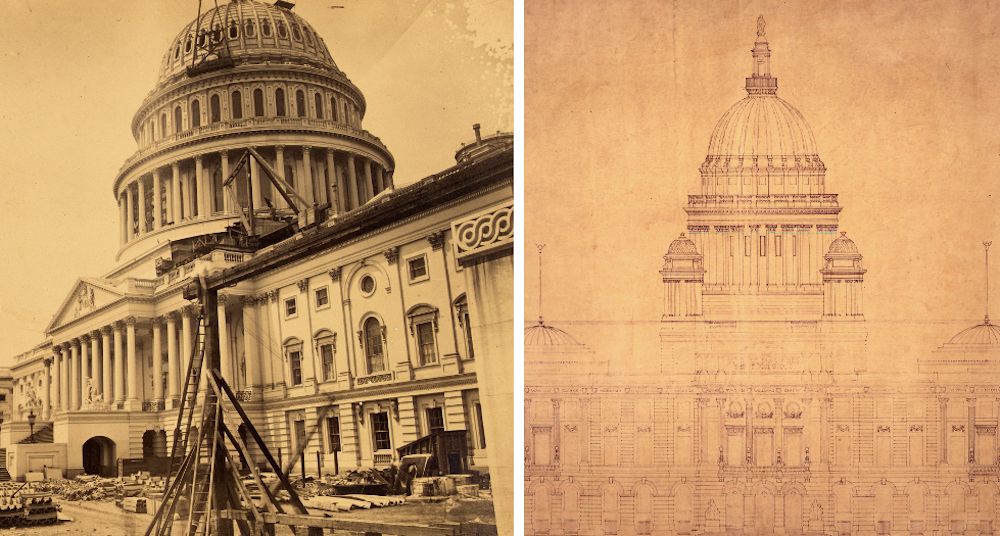
First built in 1800, the U.S. Capitol went through several changes over the years. In 1855, it was decided that the grand, “wedding cake” style dome we know today would be added. The photo at right shows the structure under construction in 1863. It was completed in 1866.
At right is a detail from the 1895 McKim, Mead & White plan for the Rhode Island State House, following the same architectural form as the building in Washington.
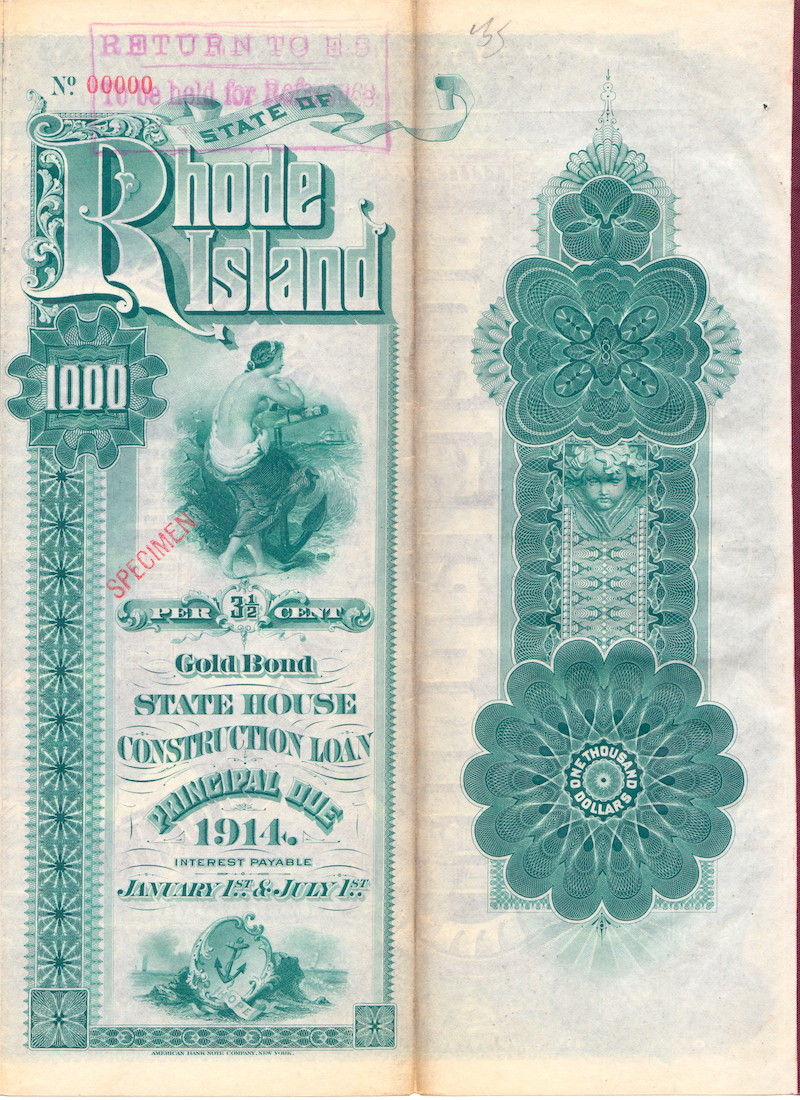
Cover of the 1894 State House Construction Loan Bond, engraved by the American Bank Note Company.
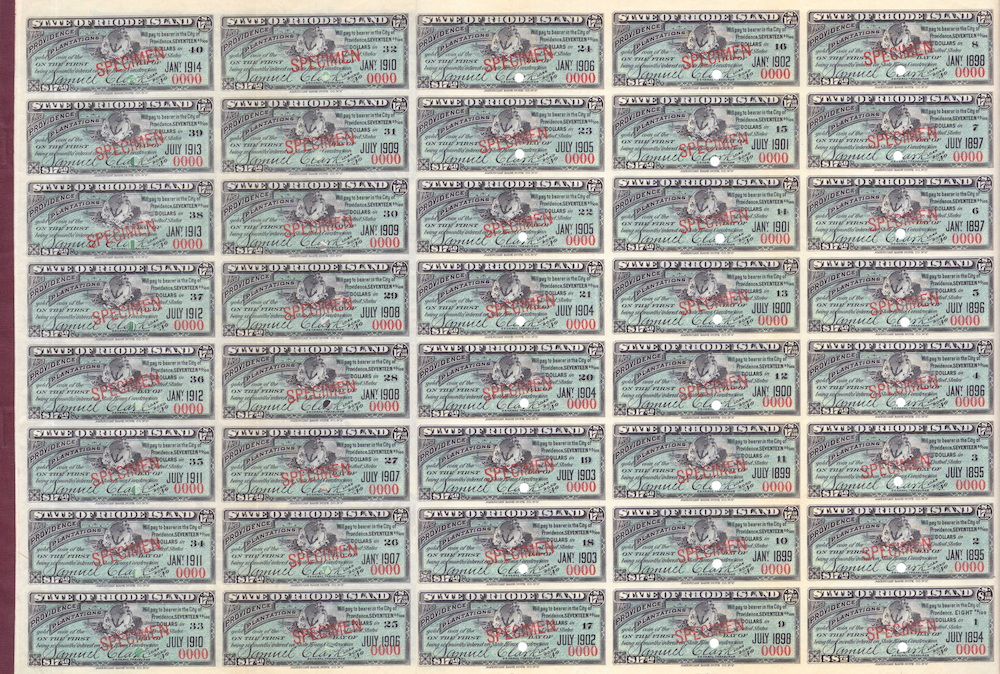
Bond Coupons, to be detached and redeemed from 1894 to 1914.
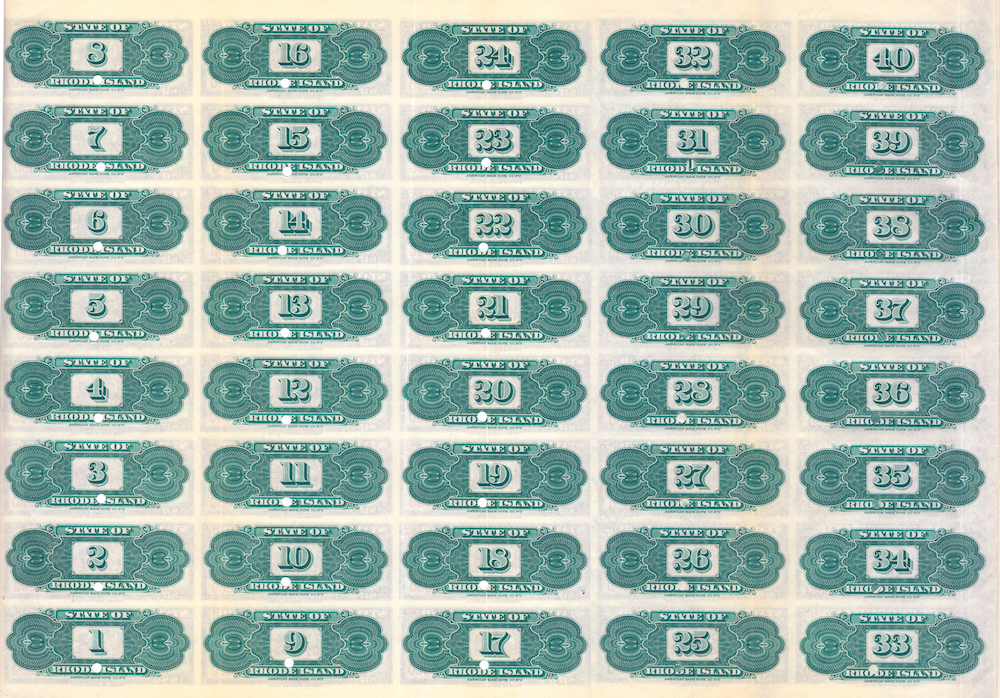
Back of the bond coupons.
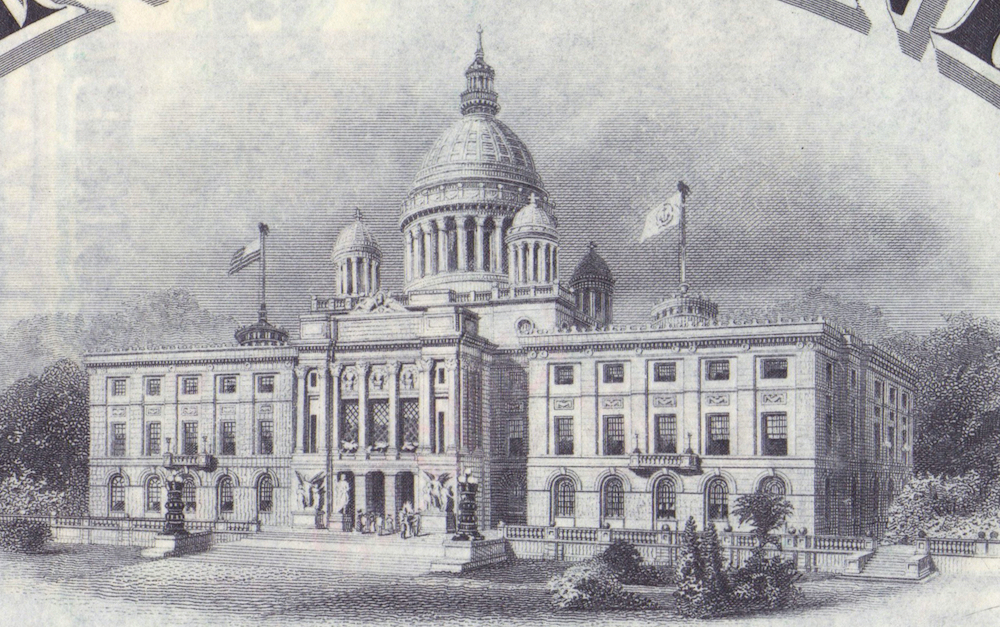
It’s unclear if McKim, Mead & White had any involvement in this early depiction of the Rhode Island State House, or if it was created wholly by designers at the American Bank Note Company. The wings are a bit smaller than the final construction. Also, it’s interesting to note that the pedestals at the front and back of the building hold sculptures in this depiction, as well as in McKim’s plans, but none are there today.

Front of the $1,000 Bond.
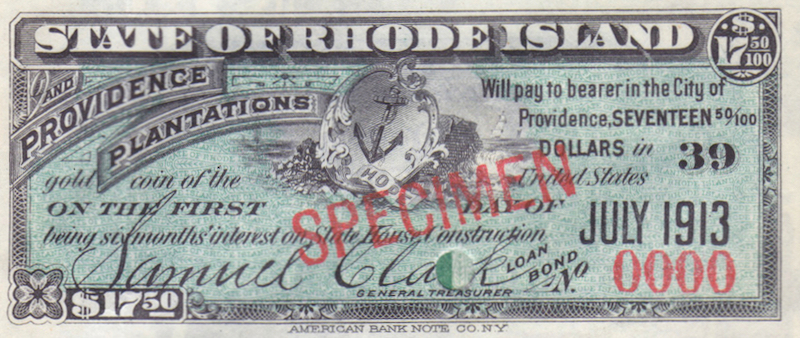
Front of one of the bond coupons, redeemable for $17.50 on July 1, 1913.
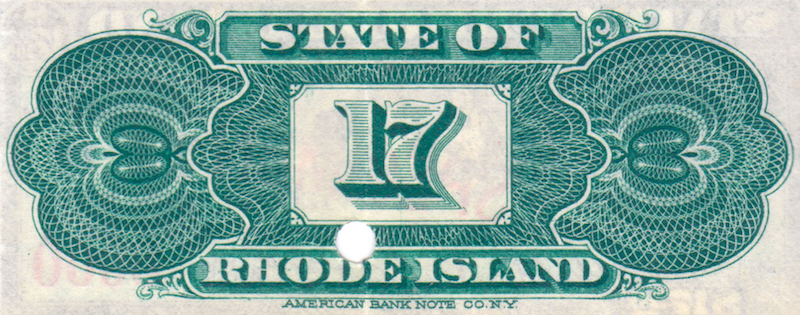
Back of a bond coupon.
